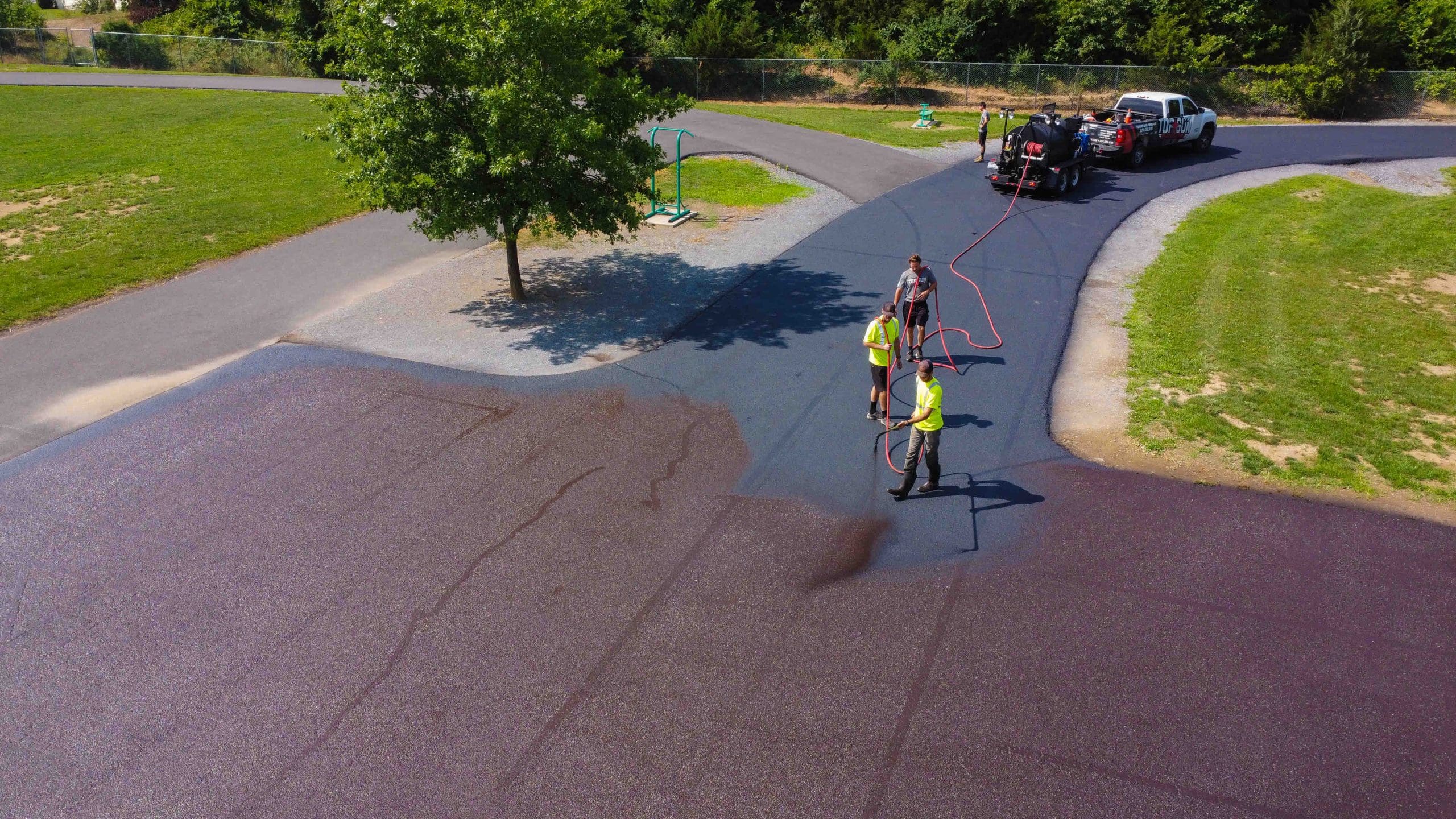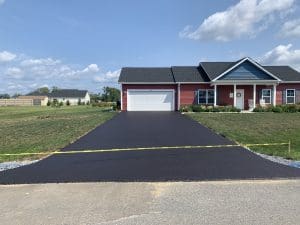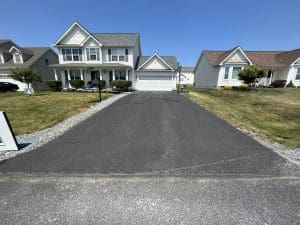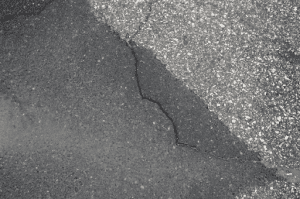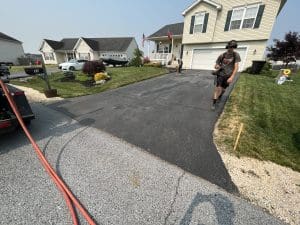Sealcoating for Weather Resistance: Protecting Against the Elements
When it comes to safeguarding surfaces from the relentless forces of weather, one name shines brightly: Top Gun Sealcoating. This powerful yet straightforward technique blankets your surfaces with a protective shield, significantly extending their lifespan and delivering long-term savings.
Unveiling the Significance of Top Gun Sealcoating Top Gun Sealcoating emerges as the essential guardian for your surfaces, offering a multitude of benefits. Its prime advantage lies in its ability to erect a formidable barrier against weather-induced damage, pollutants, chemicals, and the unrelenting gaze of UV rays.
Furthermore, it elevates your property’s aesthetic allure, bestowing a polished, clean appearance that has the potential to drastically enhance curb appeal.
Delving into the Science Behind Top Gun Sealcoating Top Gun Sealcoating operates as a shield, standing between your surfaces and impending harm. Imagine it as an added layer of armor or a layer of sunscreen safeguarding against the scorching sun.
This protective shield, composed of either coal tar pitch or asphalt cement blended with inert fillers, water, emulsifying agents, or additives, solidifies into a robust layer. This layer functions as an impervious guardian, deflecting the blows dealt by weather elements.
But how precisely does this protective layer bolster surface durability?
Upon application, the sealcoating material fills in minute cracks and imperfections on the surface. This curtails the infiltration of water, chemicals, and other malevolent substances into the underlying layers, a process that could result in structural degradation over time.
Additionally, the sealcoating layer assumes the role of a UV-ray shield. Much like how sunscreen protects our skin from sunburn, Top Gun Sealcoating shields surfaces from the ravaging effects of prolonged sun exposure. UV rays have the potential to induce fading, brittleness, and deterioration in surfaces. However, the sealcoating barrier maintains the original color and strength, countering the damage caused by UV rays.
Furthermore, Top Gun Sealcoating combats the menace of oxidation. Oxidation, triggered by oxygen exposure, can weaken surfaces. The protective layer formed by sealcoating acts as a barrier, minimizing direct contact between the surface and oxygen. This proactive measure mitigates oxidation risk and extends surface lifespan.
Unraveling the Weather Resistance Mastery of Top Gun Sealcoating Weather, in all its forms, poses a relentless threat to surfaces. Be it the sun’s scorching rays, the relentless rain, or the biting cold, surfaces inevitably succumb over time.
Top Gun Sealcoating assumes the mantle of a formidable guardian, offering an array of benefits in the realm of weather resistance. For instance, it staunchly repels water intrusion into the surface, thus thwarting the formation of potholes, cracks, and other structural impairments. By maintaining an impenetrable seal, sealcoating sustains surface integrity and resilience.
In regions graced by frigid climates, Top Gun Sealcoating acts as a bulwark against the cycles of freezing and thawing. Water ingress into the surface, followed by freezing and expansion, can amplify minor cracks into significant crevices. Sealcoating ensures water is barred from penetrating, minimizing freeze-thaw damage risk.
The harmful effects of chemicals, such as gasoline, oil, and de-icing agents, are also vanquished by sealcoating. The protective shield created resists chemical penetration, curbing stains, discoloration, and deterioration.
Moreover, sealcoating battles the detrimental impact of UV rays. Sun exposure can render surfaces brittle and prone to cracking. Sealcoating’s protective veil defends against UV rays, preserving surface flexibility and fortitude.
In a nutshell, Top Gun Sealcoating is more than a cosmetic enhancement; it is a scientifically-grounded technique to safeguard surfaces against weather-induced harm, pollutants, chemicals, and UV rays. By unraveling the science underpinning sealcoating and its role in enhancing weather resistance, you’re empowered to make an informed choice to invest in this paramount surface protection measure.
Mastering the Art of Top Gun Sealcoating Top Gun Sealcoating entails a delicate dance of precision, expertise, and quality materials. Navigating this process skillfully ensures a superior seal that endures and bestows peak protection.
Sealcoating finds its rightful place as a cornerstone of asphalt surface maintenance, encompassing driveways, parking lots, and roadways. It serves as a bulwark against sunlight’s erosive touch, water’s insidious infiltration, oil spills, and other adversities. By erecting this protective sentinel, sealcoating extends asphalt’s lifespan, enhances its aesthetics, and diminishes the need for exorbitant repairs.
Essential Materials for Top Gun Sealcoating The heartbeat of sealcoating lies in the sealer itself, available in diverse variants: coal tar, asphalt, acrylic, and petroleum-based formulations. Each type boasts distinct attributes, catering to specific applications.
Beyond the sealer, the sealcoating endeavor necessitates an assembly of materials and equipment for a triumphant project. Brushes or sprayers, serving distinct application methods, offer versatile means to attain the desired coverage. A squeegee, a trusty ally, ensures even distribution and a seamless, uniform finish. Safety reigns supreme, demanding the donning of protective gear – gloves, goggles, and a respirator – for unscathed execution.
A Comprehensive Walkthrough of the Sealcoating Process Step 1: Thorough Preparation The inception of sealcoating is rooted in meticulous surface preparation. This commences with a thorough cleansing of the asphalt surface, purging it of detritus, debris, and loose fragments. The journey begins with a sweep, followed by potential power washing for obstinate stains, oil spots, and contaminants that might impede the sealer’s embrace. Post-cleansing, it’s imperative to grant the surface ample time to dry completely before the subsequent steps. This ensures the optimal adhesion of the sealer, facilitating its potent protective prowess.
Step 2: Addressing Small Cracks Prior to the sealcoating ballet, any existing cracks or potholes warrant attention and repair. Cracks serve as conduits for water intrusion, germinating into subsequent havoc. To mend minor cracks, a crack filler or asphalt patching compound proves indispensable. These materials mend the cracks by application, thwarting moisture’s infiltration. Larger crevices or potholes might necessitate a more elaborate remedy. This could entail excavating the impaired area, replacing it with fresh asphalt, and compacting to craft a smooth, level surface.
Step 3: Graceful Application With the canvas cleansed and cracks caressed, the sealer takes center stage. A medley of application methods awaits, encompassing brushes, sprayers, and the venerable squeegee.
Brush application assumes the role of the artisan, meticulously spreading the sealer across the surface for even coverage. This technique finds favor for smaller sections or precise touch-ups.
Sprayer application, a modern marvel, employs a dedicated sealcoating sprayer for swift, uniform distribution. This approach shines in expansive territories like parking lots and roadways, where expediency and comprehensive coverage reign supreme.
Squeegee application, a maestro’s favorite, employs this tool to orchestrate an even, seamless sealer spread. This method garners accolades for its ability to deliver impeccable coverage and a polished finish.
Step 4: Nurturing the Drying Process Following the sealcoating spectacle, patience becomes paramount. Allowing the surface ample time to dry unfettered before venturing into traffic territory is non-negotiable. Drying duration hinges on elements like temperature, humidity, and the sealer’s type. A grace period of 24 to 48 hours is commonly advised, ensuring the sealer cures and solidifies optimally. During this interlude, it’s imperative to prevent foot or vehicular traffic from traversing the surface. This precautionary measure precludes any unsightly marks or impairments that could mar the wet seal.
The Unyielding Impact of Weather on Surfaces Weather, an unceasing force of nature, relentlessly conspires against surfaces. Sunlight, rain, snow – each orchestrates its unique brand of havoc.
Sun’s Wrath on Surfaces Enduring bouts of sunlight culminate in surface degradation, particularly for asphalt and concrete. UV rays render surfaces brittle and susceptible to cracks. Asphalt, with its dark hue, becomes a magnet for sunlight’s warmth, expanding and inviting additional damage.
Rain and Snow’s Consequences Rainwater infiltrates the surface through minute crevices, initiating a potentially damaging sequence. In colder climes, infiltrated water’s freezing expansion amplifies these crevices, exacerbating the damage.
In addition, the freezing and thawing cycles associated with snow wreak further havoc on surfaces.
Top Gun Sealcoating: A Solution for Various Surface Types Top Gun Sealcoating’s protective mantle extends beyond asphalt surfaces. It seamlessly embraces various surface types, wielding its protective prowess.
Top Gun Sealcoating for Asphalt Surfaces Top Gun Sealcoating emerges as the unsung hero for asphalt surfaces. It not only fends off the typical weather-induced harm but also shields against oil spills and leaks that can erode asphalt material.
Regular applications of Top Gun Sealcoating can dramatically elongate the life of asphalt driveways, roadways, and parking lots.
Top Gun Sealcoating for Concrete Surfaces Concrete surfaces, too, reap the benefits of Top Gun Sealcoating. This technique forestalls water, dirt, and debris penetration, averting cracks and deformities.
Top Gun Sealcoating can elevate concrete’s appearance, rendering it more resistant to tire marks, oil stains, and weather-induced destruction.
Sustaining the Radiance of Your Sealcoating Consistent maintenance and vigilant inspection serve as the pillars upholding your sealcoating’s longevity. Embedding these practices into your routine translates to prolonged surface excellence.
Practical Inspection and Maintenance Pointers Frequent inspections unveil issues at their inception. Detect cracks, areas of wear, and debris accumulation during these inspections, addressing them promptly for timely resolution.
Furthermore, regular cleansing proves invaluable. This involves sweeping, power washing, and immediate removal of oils or chemicals.
Timing the Reapplication of Top Gun Sealcoating While a rigid reapplication schedule isn’t etched in stone, a general guideline suggests every two to three years. This, of course, varies based on surface usage and exposure to environmental rigors.
As you embark on your journey to acquaint yourself with Top Gun Sealcoating, remember that it’s an investment nurturing the longevity and visual splendor of your surfaces. By comprehending and embracing this technique, you inevitably unlock the door to substantial savings in both time and resources.
